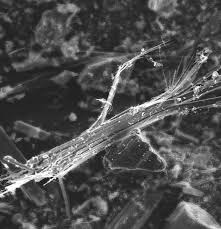At the beginning of last summer, Safety + Health Magazine released the 2022 Training Survey with some telling results. Companies are tired of the same old safety training that is stale, repetitive, and ineffective.
When asked about their greatest challenges around worker safety training, companies identified these five common concerns as their biggest pain points:
- Keeping training interesting, relevant, and up-to-date;
- Offering consistent training across the organization;
- Flexible schedule to accommodate various shift structures and work models;
- Getting employees to complete their training and implement what they’ve learned;
- Getting management buy-in about the importance of the training;
As a safety training provider who’s been around for over 30 years, this got us thinking at Future Environment Designs Training Center (FEDTC) about why that is the case. Why do training providers struggle to keep safety training fresh and engaging at a time when there are so many tools and learning models at our disposal?
Here, we share how FEDTC keeps our training fresh, engaging, and flexible. We hope that this will help our current and new customers better assess our course offerings as well as give other training providers some insights into how they can improve their approach so that we can all raise the safety training standards and reduce injuries across the board.
 |
| Asbestos Handler |
Keeping Employees Interested and Engaged
Safety training is a regulatory requirement which means that most workers go through the same content each year. Not only that, but safety content in itself can sometimes be a bit dry as there’s a lot about rules, regulations, and what workers should and shouldn’t do in different scenarios.
That said, it doesn’t mean that safety training should be boring. At FEDTC, for instance, we take great care in making our courses as engaging as possible. At the beginning of the pandemic, we implemented Poll Everywhere, a polling tool that allows students to interact during virtual and in-person classes and helps the trainer check in with students as part of their presentation.
This breaks up the one-way communication of the training format and gives students the desire to ask questions, comment, and give feedback. All of this has significantly increased participation, and discussions, and has helped us make our courses much more interesting for our students.
 |
| Asbestos Operations & Maintenace |
Offering Training That’s Consistent and Tailored to the Organization
If safety training is to work, it needs to be consistently delivered across the organization. Likewise, the content needs to be adapted to the organization’s specific scenarios for it to resonate with the employees, as not all businesses face the same safety concerns.
At FEDTC, we review our training materials annually to determine if they need to be updated. We also adjust our classes to meet specific work procedures and practices our clients use, such as working with asbestos cement pipe or asbestos electrical wire insulation. All of this makes the training relevant and consistent with the working environment in which our clients operate.
Not only that, but we regularly attend conferences such as Professional Abatement Contractors of New York (PACNY), Environmental Information Association (EIA), the American Council for Accreditated Certifications (ACAC), and others to stay abreast of the latest research, regulations, and standards in the industry.
 |
| 40-hour HAZWOPER |
Making Training Flexible
A large portion of our courses is available as both an in-person course and a virtual class which students can choose based on their location, work schedule, and availability. We also run the same courses several times each month so that students have more options to choose from.
When it comes to online training, we offer courses that are on-demand and students can take whenever they want or virtual instructor-led classes which can enrich the learning experience but do require student participation in a specific time.
 |
| Mold Worker/Remediation/Supervisor/Assessor Course |
Driving Course Completion and Compliance
For us, the training doesn’t end in the (virtual) classroom. Instead, we engage with learners post-training via email, text, or phone to answer questions and keep engagement high. If we go back to the polling tool, we also use polls to keep the communication going in between courses if they take place on different days or months.
When it comes to compliance, we use polls at the beginning of our training sessions to see how much our learners remember from the previous year. This helps us identify key areas we need to put extra focus on or update the content to make it more memorable and engaging. This has dramatically improved learners’ knowledge retention and improved the overall outcomes of our training courses.
At FEDTC, we understand that learners may need several touchpoints with the content in order to learn it. That’s why we try to provide as much and as diverse content as possible through our website, blog, and LinkedIn New York Asbestos Group. For example, learners (and their employers) can use our Resource Page to get access to a plethora of recordings, papers, and conference presentations which are constantly updated via Dropbox. We also provide a Negative Air Calculator for learners to get a better understanding of how negative pressure can keep work areas safe and lower contamination levels.
 |
| OSHA 10-hour Construction Safety Course |
Showing the Value of Safety Training
Finally, we don’t take things for granted. We use Coursecheck, an online course feedback tool, to invite students' feedback and use that as a guide for improvement. So far, we’ve received over 1500 online reviews with an overall 4.8 out of 5-star rating.
Other than looking at what other people are saying, the best way to demonstrate the value of the training FEDTC provides is to give it a go. FEDTC offers many short and refresher courses which you can use as a test drive to see if our methods suit your needs. Once you’ve assessed the outcomes of those courses, we’d be happy to have a wider discussion about how we can deliver holistic safety training that is going to meet the needs of your particular business.
 |
| OSHA 30-hour Construction Safety Course |
The Bottom LineSafety training may not be your favorite pastime activity, but its value in the workplace is indisputable. The Bureau of Labor Statistics has found that in 2020 there have been 4,764 work-related deaths where construction and transportation fatalities accounted for nearly half of those. Construction, in fact, is cited as the industry with the highest rate of workplace fatalities in the United States.
This highlights the importance of delivering quality and engaging workplace safety training. The onus is both on training providers and employers to collaborate and come up with solutions that are relevant, engaging, and tailored to the circumstances workers face each and every day.












.png)




























